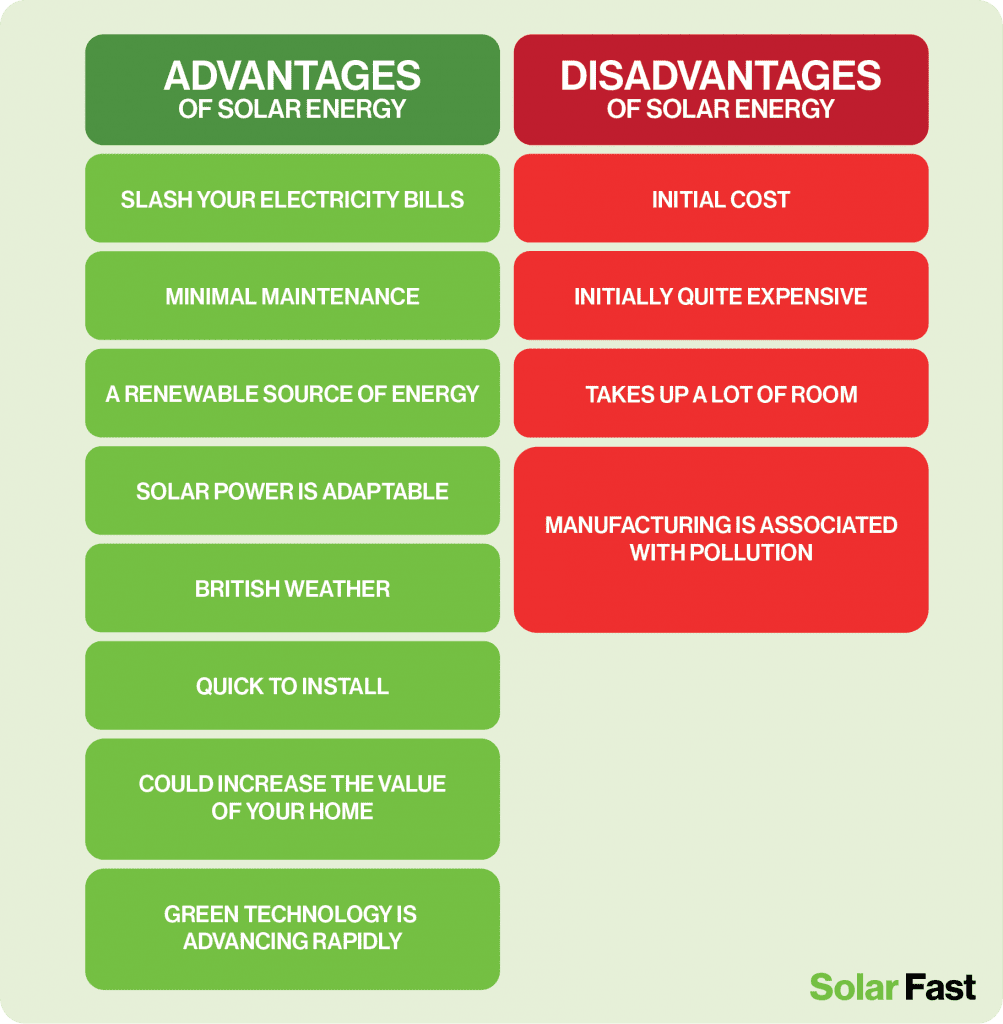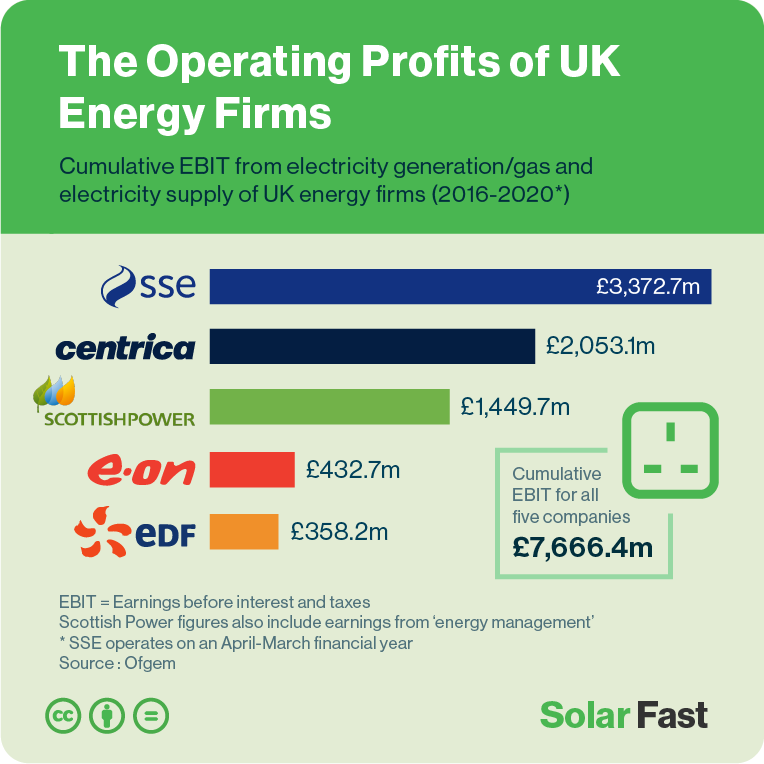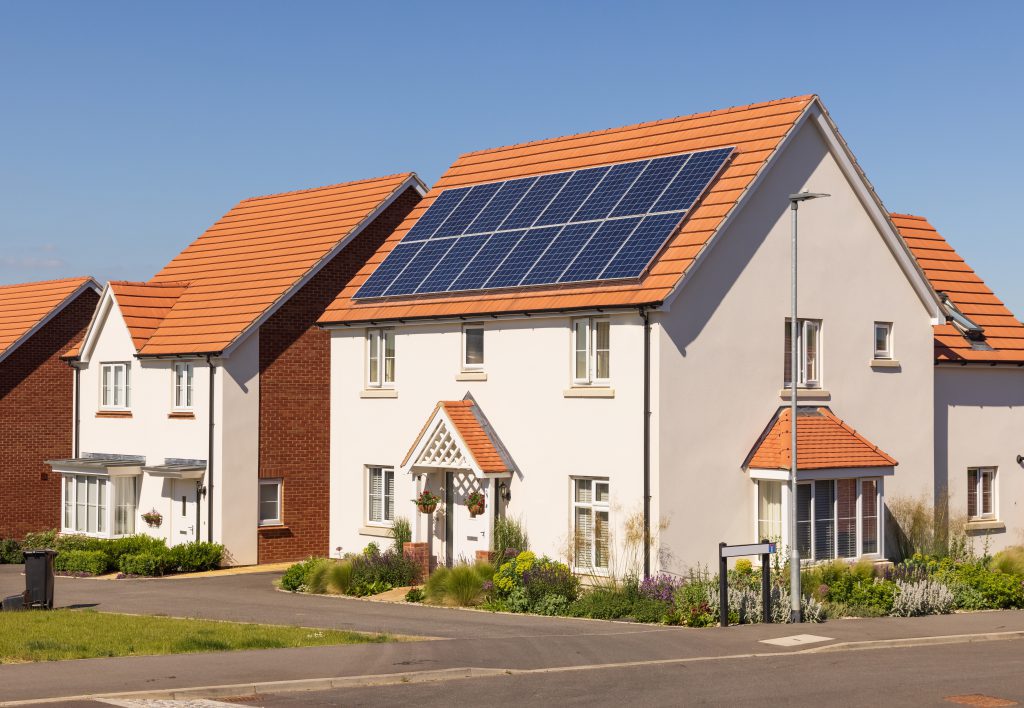What is solar energy?
Solar energy comes straight from the biggest source of power in the whole solar system – the sun.
The light produced by our local star travels on molecules called protons. When these protons hit a solar panel they jiggle material inside that panel to create either electricity or heat.
You may think that is a very simple explanation but it’s pretty much what happens – the problem was harnessing that power and now we can do that we just need to improve the amount we can extract.
So, what are the advantages, and disadvantages, of installing a solar energy system in your home?
Summary – TLDR

The Advantages of Solar Energy
Slash your electricity bills
Current, affordable solar technology available in the UK won’t free you from the grid completely. It can supply most of your electricity during the sunnier months but wintertime means fewer hours of sunshine and weaker sunshine at that.
However, as energy companies continue to increase their profits by charging you as much as possible, and the government is only able to legislate for unit price caps, we can only see things getting worse.
There are less fossil fuels in the ground, which means the price will continue to increase until we make the transition to renewables for our grid.
And, even then, the energy companies need to make a profit so they will overcharge for any electricity you buy from them.
A 4kW solar panel system installed by an MCS certified supplier will save you up to 80% a year… which is not to be sniffed at as it means your system will pay for itself in just over 12 years on average.

Minimal maintenance
Most companies will guarantee their solar panels for 25 years. You can bet your bottom dollar if a company will give you a 25 year guarantee, the product is going to last a lot longer than that.
Most panels will last, on average, 40 years before they become too inefficient.
A Renewable Source of Energy
We live on a finite planet so we can’t expect our natural resources to last forever.
Luckily for us, the sun is set to keep shining for, give or take a millennium, another 5 billion years. And, it doesn’t matter how much solar energy we use, we are never going to wear the sun out.
Even with today’s technology you could power the entire world by setting up solar farms on just 1.2% of the Sahara Desert – but while we wait for that to happen, we can just as easily have our own, personal solar power stations on top of our homes.
So, when the energy prices are hiked by gas companies, your home will already be taking care of a large portion of your energy needs.
And it’s all green too!

Solar power is adaptable
Solar panels are perfect for generating electricity for your home, but that’s not the only way to harness the power of the sun.
Electricity is generated by photovoltaic panels but heat can be generated from solar thermal panels which is a slightly different kind of science.
Solar thermal panels are used to transfer the heat of the sun to water tanks, and other receptacles, to give you free, sustainable hot water.
Smaller PV arrays can also be used to create power for outdoor lighting, water features or even a garden office/man cave.
British weather
The unpredictable UK climate is always cited as a big disadvantage for solar energy, but it really isn’t.
When the sun is beating down during those precious few summer days, your panels will be working at their very highest efficiency. But, when the sun disappears behind the clouds, your panels will still continue to work almost as well.
Solar panels work on strong light and we have plenty of that in the UK whatever the weather. On average, cloudy day solar panels will only lose 10% – 20% of their efficiency.
Also, solar panels work at their most efficiency between the temperatures of 15°C and 35°C – so the UK’s temperate climate is just about perfect for optimum performance.

Quick to install
This is not something we would encourage people to do themselves unless they are a professional used to working at height. But any reputable, MCS certified installer should be about to have a standard system up and running within a couple of days of arriving at your home.
Could increase the value of your home
Any home improvement that improves energy use or somehow benefits a new buyer, will increase either the value or the saleability of your home.
Many studies have been done to show solar energy systems increase the value of your home – and they save you money while you live there.

Green Technology is advancing rapidly
Talking of new technology, solar panels are improving their efficiency on an almost daily basis.
Polycrystalline panels used to be the best panels you could buy. They were replaced with 60 – 72 cell monocrystalline panels that were more expensive but way more efficient.
Now, companies are now recommending 104 Half Cell monocrystalline panels which are even more efficient than the full cell versions.
Current solar panels capture 15% to 20% of the solar energy on average, but the clever bodies working in the industry have discovered that using the material perovskite, instead of silicon, in solar cells can increase the efficiency of the panel by 28%.
The Disadvantages of Solar Energy
Initial Cost
This is the biggest hurdle people think they have to clear when they are looking at installing solar panels, but it needn’t be.
An average installation, at 4kWh, would cost someone in the UK £12,000 on average, which is a fairly hefty amount to pay out in one go, but you can spread the cost using finance if you don’t have the savings.
Your system can save around £850 a year at current prices the system will usually pay for itself in just over a decade.
Learn more about solar panel costs.
Take Up A Lot of Room
Solar Panels are quite big and you need a fair few of them to generate the energy for your home – so you need to make sure you have the space for them.
As panels generally go on the roof, we feel they don’t really impact your living space. You can have them in the garden or somewhere else closer to the ground, but they are more likely to become soiled, damaged or shaded.
As technology improves in the next decade, panels will become more efficient and therefore produce more energy per square metre – and panels are already only 1.7 metres by 1.5 metres so most people’s roofs are going to have no trouble fitting them on.
Manufacturing is Associated with Pollution
No energy production system is perfect and solar is no different.
Most of the problems associated with solar energy are to do with the production, and disposal, of the panels.
First quartz needs to be mined to create the silicon cells, the quartz then needs to be treated with chemicals and heated to a very high temperature to extract the silicon, further mining is needed for the metal frame and copper wire.
All of the main materials used in a solar panel can be recycled pretty easily.
Unfortunately, as the solar sector is still in its infancy despite the first domestic systems being fitted in the US in the early 80s, panel recycling plants are few and far between.
Once again, the future is our friend here – the more of us that get solar energy, the more companies will spring up to recycle our dead panels.
All that said, the panels we install now will last for nearly 3 decades and they become carbon neutral after only 3 years of use – which is a lot better than any system using oil, gas or coal.
How do I improve my Solar Efficiency?
As you can see, the pros far outweigh the cons when it comes to installing a solar energy system in your home. But, to get the very best out of that system it’s a good idea to keep an eye on the efficiency of the system as the years go by.
Keeping your panels clean is the easiest way to ensure they will always function at their very best efficiency.
On top of that, an annual check or service for the inverter and battery storage will usually pick up any problems before they affect your system too much.
A daily check of the inverter, just to ensure the lights and readings are all doing what they should be doing. Most inverters will have a warming light if anything is going wrong.
Keep an eye on the technology too. The leaps and bounds being made in renewable energy are quite dizzying and you could be looking at 50% efficiency from affordable solar panels in the next 5 – 7 years as well as battery capacity increasing.


